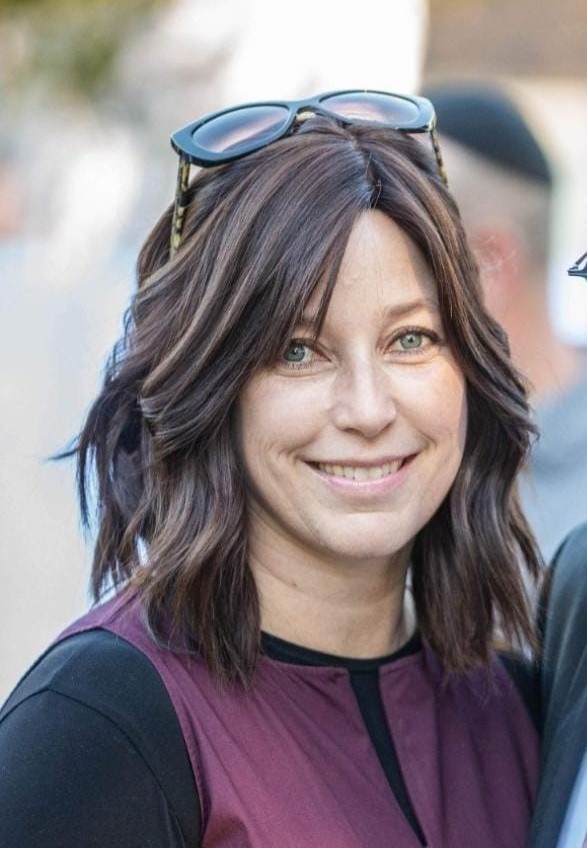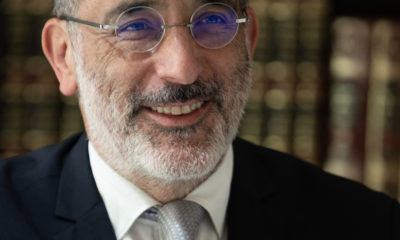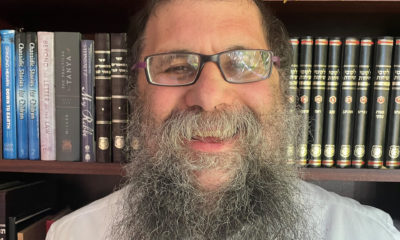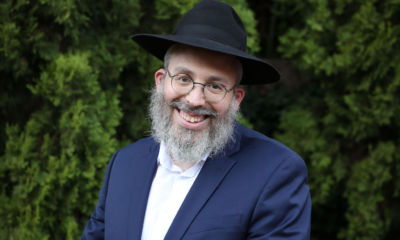
Religion

Five lessons we never forget
The focus of the seder night is telling the story of the exodus from Egypt and the miracles done by G-d for us, His children. This is a once a year opportunity!
G-d wants us to remember our national story of origin forever, and transmit it continuously to future generations. Everything we do at the seder is in pursuit and support of this goal. In a sense, this is the original night to “never forget” our roots in slavery and struggle, leading to our miraculous national redemption.
The haggadah is designed with some strange and surprising things, like three layers of matzah; four questions; four cups; four sons; and eating matzah and maror sandwiches. We do all this in an engaging, creative, and interactive way. We want “to make the children ask”. We want to incite their curiosity and questions. All this in order to do the main mitzvah of the night, the centrepiece of the seder, the magid (telling the story), the mitzvah around which all the other mitzvahs of the night revolve.
Because we don’t just tell the story, we make it understood. The seder is an audiovisual production. We have some lively fun in pursuit of this lofty goal. It’s not really a night of learning Torah or prayer, above all, it’s an emotional, experiential, child-centred night of optimism and faith. The greatest purpose of this night is to feel deep gratitude and submission before G-d.
As we follow the narrative of the haggadah, many themes emerge. Here are some valuable ideas to share and discuss at the family seder. They include educational insights and important lessons. These themes have never been more relevant than they are in today’s context, especially this year in the shadow of Israel’s war on Hamas.
- “Seder” means order or structure. Our Pesach seder must blend order with inspiration, Jewish law with creativity. The most beautiful and successful musicians, sportsmen, and artists have integrated structure and discipline with creativity and inspiration. So, too, for the mitzvahs of Jewish life. “B’seder” means “in order”, “ok”, and “all good”. The seder is made up of 14 parts, which are unpacked and explained with everyone present. We know that high achievement isn’t spontaneous and Rather, it’s a well-planned and disciplined integration of natural talent and a lot of hard work. Most importantly, our life is in order because it’s overseen by G-d. Nothing is coincidence or random. It’s all “meant to be”. We’re all on a road map so we won’t get lost.
- We’re the children of Hashem. The four questions are asked by the youngest child, and if there are no children, then by the adults present. “And even if we’re the wisest and most insightful of all men who know the whole Torah, we must still talk about this history, and the more we do so, the better.” Children have the wonder, curiosity, and excitement that adults may have replaced with cynicism, scepticism, and resentment. We should remember to simplify and to have a certain childlike faith in G-d. No-one is more helpless and vulnerable than a newborn baby, but that baby feels utter peace and calm when it’s in the arms of its parents. So, too, seder night is the night to feel and transmit ideas around simple fait Like a baby in Hashem’s arms, we’re safe and without worries in His world. In the Torah, the seder night is called “Leil shimurim” (A night of protection and being guarded). At the end of the seder, we all sing, “Who knows one?” because all we really know is “One is Hashem of the heaven and the earth.”
- Modesty and humility is symbolised by the matzah itself being the simplest food – not enriched, not fancy, not luxurious. Matzah is food for the soul. We’re eating uncomplicated simplicity and humility. We’re not puffed up and full of ourselves. Just like children are naturally themselves, with no airs and graces, so, too, we would like to be sincere and authentic in our character and behaviour. Matzah is the bread of the poor, the bread of faith, and symbolises going back to basics. In spite of the miracles and victory in Egypt, we remain humble and simple.
- Gratitude, perspective, and appreciation is a strong theme as we tell the story from the negative to the positive. Once we were slaves and before that, we worshipped idols. We came from nothing! We were nobodies until we were redeemed, chosen, and shepherded towards the har Sinai experience. Our trajectory was changed. We went from the greatest depth to the greatest We appreciate freedom, family, and being Jewish only if we absorb where we came from. Food tastes best when we’re hungry. Freedom tastes best when we recall what it was like to be enslaved. Pesach is called zman cheruteinu (the time of our freedom) because we don’t take freedom for granted. Once we were beggars, but now we’re free! Dayenu! Author Slovie Jungreis-Wolff once said, “We mistakenly believe that the more we give our children, the happier they’ll be, but in truth, the more they appreciate, the happier they’ll become”.
- At the seder, we learn that adversity and struggle gave us strength as a people. We learn the value of grit and resilience. We became great because of the hardship we endured. The hard-boiled egg is symbolic – the more heat, the tougher we become. Adversity is a catalyst for growth. The maror we eat forges us into a nation. Now we say, “Let all who are hungry come and eat. Let all who are needy join us.” Some are in need of love or friendship, some are in need of time or education. Being in need makes us who we are today. Yachatz is the broken matzah. We all suffer, but we break bread and share it with anyone who needs it. This is chesed (kindness), a foundation of our identity as a people.
All the lessons and ideas we talk about on seder night link to what we say and eat. It’s an audiovisual show of smells, tastes, stories, and wonder for all. We draw the attention and interest of all our guests and inspire their curiosity and questions. We create an emotional and experiential seder not only an intellectual one. One of the four sons “doesn’t know how to ask”. It says you open his mind for him, and his educational path.
All six mitzvahs of seder night support the telling of the story. We eat the matzah and the maror, drink four cups of wine, eat the afikomen, and say Hallel.
We mustn’t forget our broader goal. There’s a job even more important than making our children happy. The ultimate goal of a Jewish parent is to raise Jewish children who are closely connected to Hashem and other Jews, children who are wrapped up with the mission and destiny of the Jewish people as a whole. Children to whom we have successfully transmitted our faith and trust in G-d. Children who faithfully observe and guard all the mitzvot out of love and gratitude to Hashem. Successful Jewish parenting isn’t just about teaching information but about education in this broad sense. Our whole Jewish future depends on it. We’re always only one generation away from failure – G-d forbid! The mitzvah to explain and transmit our history, values, and identity, is the lifeblood of our future as a nation. In this sense, parenting is part of our national mission. May we all be blessed with success!
Next year in Jerusalem!
- Gina Goldstein is a rebbetzin, mother and grandmother, and is the wife of Chief Rabbi Dr Warren Goldstein and co-founder of the Shabbos Project.”










